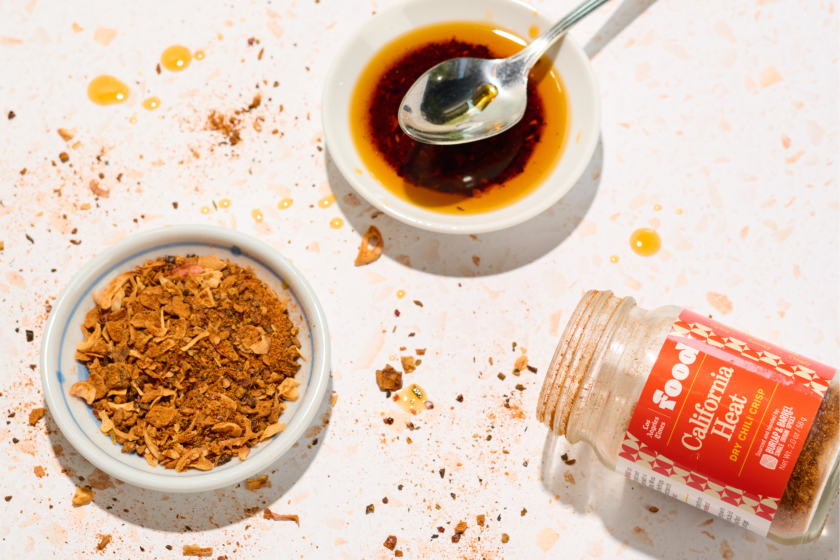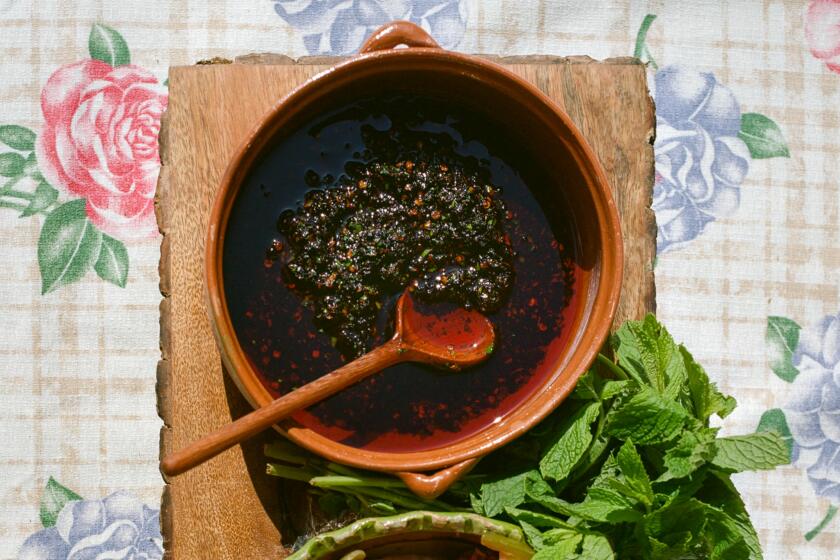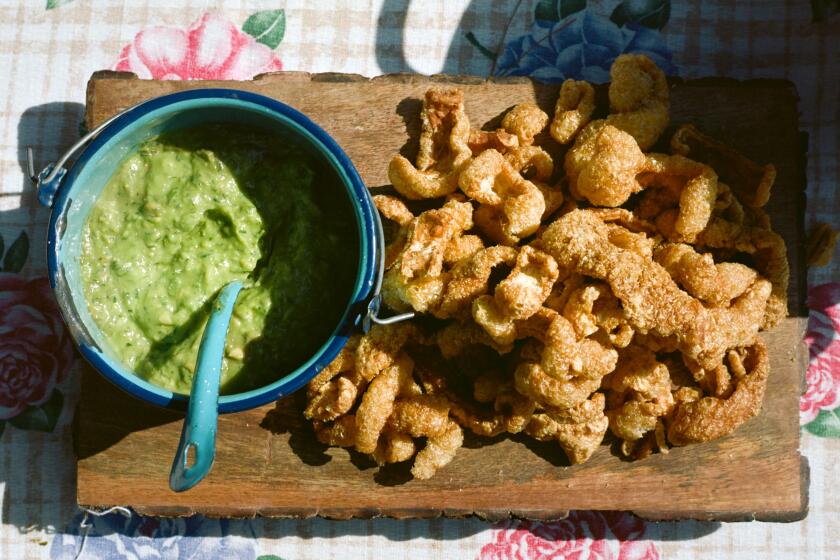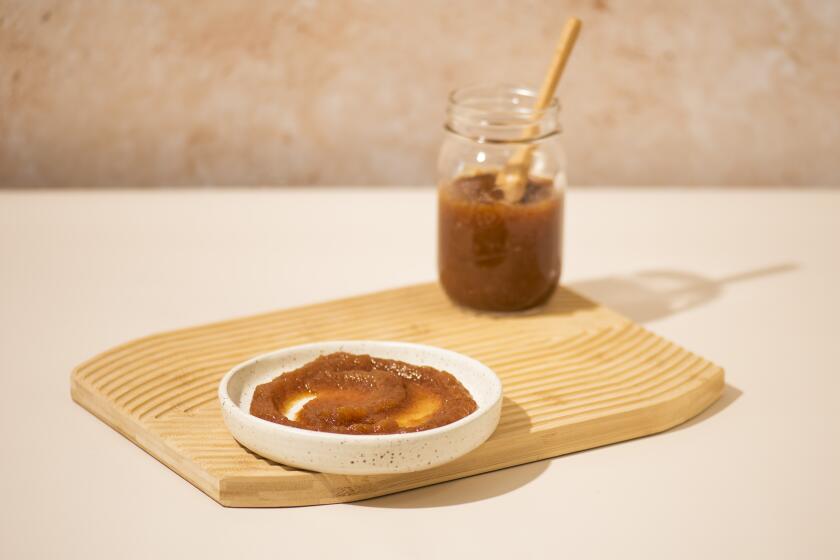Dulce de Leche
It’s just after 5 a.m. on a typically chilly morning in this small Andean town, but for Emma Guzman, the day is already at full force. Guzman, 74, has prepared cake batter, determined the number of loaves of bread to be baked and double-checked on the delivery of fresh milk for her famous arequipe pastries.
“All these recipes came from my mother,” says Guzman, as she stops to take a sip of coffee. Dressed in a black robe and leather slippers, she is periodically interrupted to issue an order or taste the sweets made in her famous kitchen.
Arcabuco is famous in Colombia for its pastries, which are prepared according to old family recipes and sold at the dozens of red-tile-roofed shops that line the small town square. In fact, cookies and other sweets are literally bread and butter for most of Arcabuco’s 2,000 residents.
Started in 1949 as a small cafe that sold tinto (strong coffee) and pastries to bus passengers who stopped on their way to the capital city of Bogota, Guzman’s shop slowly built a reputation. Just a few years later, Guzman changed the name of her shop to El Pomeque, after the bus company, and began to expand her business. Eventually she built a bakery and added a house behind the cafe.
Today, El Pomeque is still a family-run shop, and its customers come from as far as Bogota, nearly two hours away.
“I’ve been stopping at her shop ever since I was a child,” says Juan Carlos Olarte, a 30-year-old businessman from Bogota. “My parents always stop at her shop, and now I go there with my family.”
Among the main draws at El Pomeque Cafe are Guzman’s delicate little arequipe pastries, thin layers of pastry almost like filo layered with cream, in effect a Colombian napoleon.
Made from milk, sugar and cinnamon, arequipe, or dulce de leche, as the cream is called in Mexico, is as basic as apple pie in the United States. Though it has taken various incarnations across the Americas, its essence is simple and pure.
Also known as manjar blanco and cajeta in other parts of Latin America, it is among the most common desserts found in the region. The creamy concoction is often used as filling in cookies and cakes or simply as a spread.
And it is gaining popularity outside Latin America. Haagen-Dazs’ dulce de leche ice cream is one of the company’s fastest-growing flavors. Shortly after its introduction in 1997, it became the company’s second best-selling flavor after vanilla.
“It’s just something so delicate and yet very rich and basic,” says Olarte.
“It’s such a typical dish here that everyone makes it,” says Gina Magnolia Reano Baron, who has been a customer of Guzman’s since she was a child and who, until recently, was Colombia’s minister of labor under President Andres Pastrana. “It’s just a taste you grow up with. I can still remember going to her shop as a child and tasting it.”
In fact, arequipe is thought to have its roots in Europe. Sugar and much of the confectionery tradition of Latin America were imported from Spain. Because the indigenous population rarely used sugar, pastries and sweets were relatively unheard of until the 19th century, when coffee and sugar cane plantations began to flourish in Colombia and other Latin American countries.
Initially molasses was used to sweeten dishes, but by the early 20th century, sugar was available and used by the growing influx of Europeans desperate to re-create some of the dishes they had left behind. Today, arequipe is a staple in Colombia just as dulce de leche is commonplace in Mexico.
To learn the secret to making this not-for-dieters treat, one must go to kitchens like Guzman’s, where it is still prepared according to century-old recipes.
Standing over a metal canister filled with milk, Guzman’s assistant carefully measures the liquid, placing it in a large pot. Then comes the sugar, sugar and more sugar. In fact, Guzman’s recipe calls for nearly three pounds of sugar. She laughs, “Today everyone is so worried about their weight. Look at me I’m 74, and I still eat sweets and I’m fine.”
If Guzman has a trick for arequipe, it’s the use of a single long, green onion. “You’re cringing, but the onion helps give it a creamy taste so it isn’t too sweet and helps blend the flavors,” she says. Further, the onion must be added while the milk is still cold.
Guzman insists that an onion placed in the mixture will be undetectable in the final product. In fact, she says, leaving it out will create a less textured flavor because the milk, sugar and cinnamon will not quite have fused into the caramel-like taste of arequipe.
After adding a large stick of cinnamon, the mixture is placed over high heat and boiled until it begins to bubble, nearly reaching the top of the pot. She cautions against stirring the mixture at this early stage.
And then comes the hard part. After the pot boils for a few minutes, the heat is reduced to a simmer and the mixture is left to cook for three to five hours, with frequent stirring, until the liquid is transformed into a creamy sauce. When cool, its texture is similar to that of creamy peanut butter, but the taste is full of subtle hints of sweet cinnamon and rich milk.
“This, along with using pure and fresh ingredients, is the secret to making good arequipe,” says Guzman. “Well, that and I don’t recommend making it if you are in a bad mood. The flavor won’t turn out right. I don’t know why but I’ve known people who try and make it when they are angry or upset, and the whole thing will just go sour on them.”
Pour milk into 8-quart or larger pot. Add sugar and stir with large wooden spoon until sugar dissolves and none is left at bottom.
Place pot over medium-high heat and add onion, if using, and cinnamon stick while mixture is still cold. Allow mixture to warm, stirring once or twice, until it begins to simmer. Bring mixture to boil without stirring (it should bubble up) 10 or 15 minutes. Do not allow to bubble over.
Reduce heat and cook mixture 1 to 1 1/2 hours, stirring frequently. Test for doneness by removing a teaspoon of liquid and allowing it to cool. It is done when it is cool and smooth and creamy, not runny. Allow it to cool. Remove onion and cinnamon stick.
Get our Cooking newsletter.
Your roundup of inspiring recipes and kitchen tricks.
You may occasionally receive promotional content from the Los Angeles Times.















